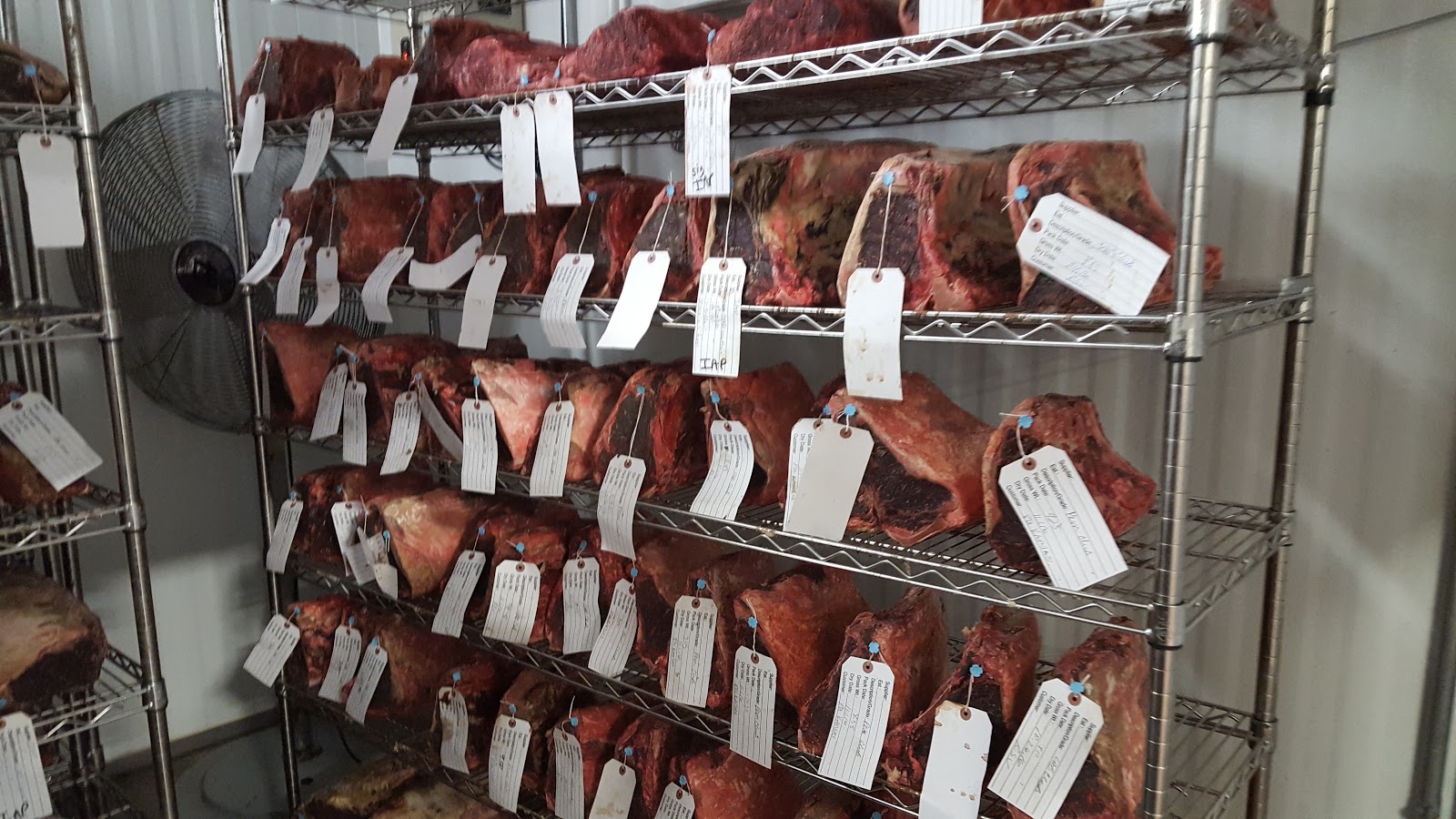Dry-Aged steak is a delicacy that has just recently hit the mainstream. Previously, the unique flavors were only available at high-priced specialty steakhouses. As this method of aging has grown in popularity, more elite steakhouses have added it to their menus, including Rube’s.
So what is a dry-aged steak?
Well first let’s talk about why steak is aged. Steak actually becomes more tender as it ages. The meat becomes more tender over time, making for a more enjoyable eating experience. Aging also adds flavor to beef.
Now to the method of aging. There are two choices - wet aging and dry aging. When beef is wet-aged, it is vacuum sealed and allowed to age in its own juices. This is done in a refrigerated environment, ensuring food safety. Since our start in 1973, Rube’s Steaks have all been wet aged at least 30 days.
Just recently we have begun offering dry-aged steaks in small, limited batches between Thanksgiving and New Year’s. And new in 2018, Rube's is doing a small summer batch of dry-aged ribeyes, by pre-order only. To dry-age a steak, the meat is placed in a temperature and humidity controlled environment and aged in the open air (not inside a wet bag), hence the term dry-aged.

As it ages, a crust or bark forms on the meat.
Here’s a close-up of a strip loin dry-aging.

You can see that the exterior of the meat has lost its moisture and a bark is forming. (It looks unsightly, but under that crust is something incredible!)
Most of the bark is trimmed away after the meat is done aging, but the meat retains a nutty, earthy flavor. Here you can see the inside of a steak after it was aged approximately 40 days, trimmed and cut to order. Side by side with a wet-aged steak, it will be of similar color on the inside or slightly darker.

Along the bone, you can see a bit of bark remains. It has been trimmed from all the other edges.

Timing plays an important role in dry-aging. As the meat ages, muscle breaks down, making the meat noticeably tender. And the longer the meat ages, the more intense the flavor. Rube’s dry-ages for 35-40 days. It’s the “sweet spot” where you can taste the flavor, but not so long that the flavor is overwhelming. The fat will really absorb the flavors, so it’s important to start with high quality, marbled beef and to leave a little fat on the steak when it’s trimmed. But be attentive when cooking your steak. I find they cook faster, and the grill can be more prone to flare-ups due to the fat trim if left unattended.
Dry-aged beef sells for a premium price, in part because of rarity but mostly because there’s a fair amount of loss or waste on the original piece of meat once the bark is trimmed away. When I’m paying a premium price for such a carefully aged product, I want to be able to taste the dry-age flavor. For that reason, I never pay for beef that’s aged less than 30 days. In my experience, that’s not enough time to develop the unique flavor and it’s not worth paying for. A restaurant or meat market should be proud of how long their steaks have aged. If they can’t tell you how much age is on their beef, don’t buy it.

If you’ve read this far and you’re thinking dry-aging sounds pretty straight forward, let me warn you. You can’t put a ribeye in the back of your fridge and expect it to be safe a month later. Our meat is aged on special racks to allow air movement and prevent rotting. It’s stored in a conditioned room protected from contamination. And you must start with a large section of meat (called a subprimal) that can later be cut into steaks after waste is trimmed away. In short, a safe dry-aging environment is difficult to create at home and I don’t recommend it.
If you’ve never tried a dry-aged steak, ours is a good place to start (when it’s available). It’s a good introduction to the texture, aroma and flavor of dry-aged beef. If you fall in love with the taste, as I have, there are places around the country dry-aging their beef for three months, five months and even longer. So what are you waiting for?
You might be interested in: Dry-Aged Bone-In Ribeye











 I do the 5 day Marinating it in seasoning by McCor
I do the 5 day Marinating it in seasoning by McCor 


